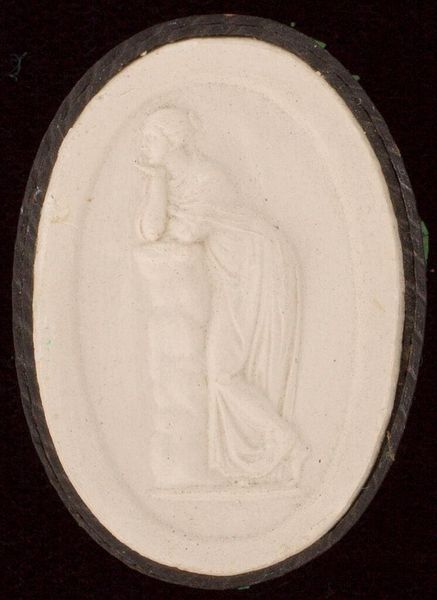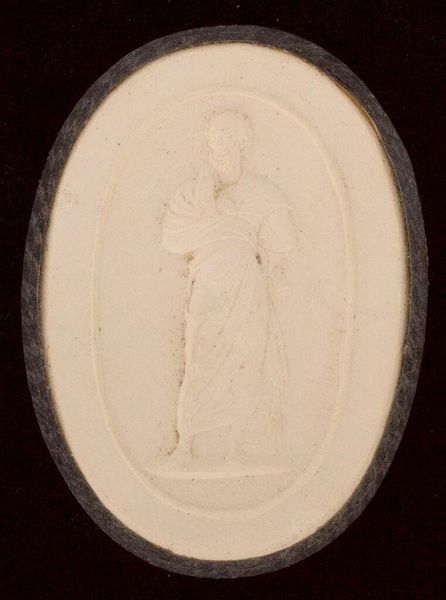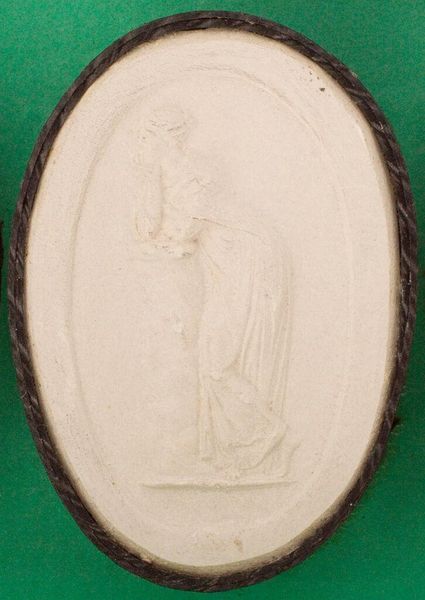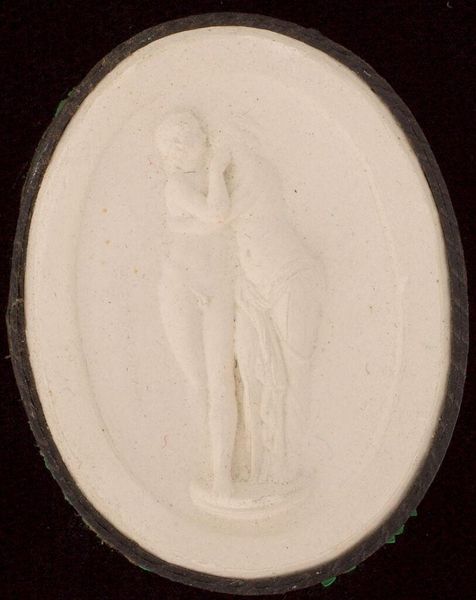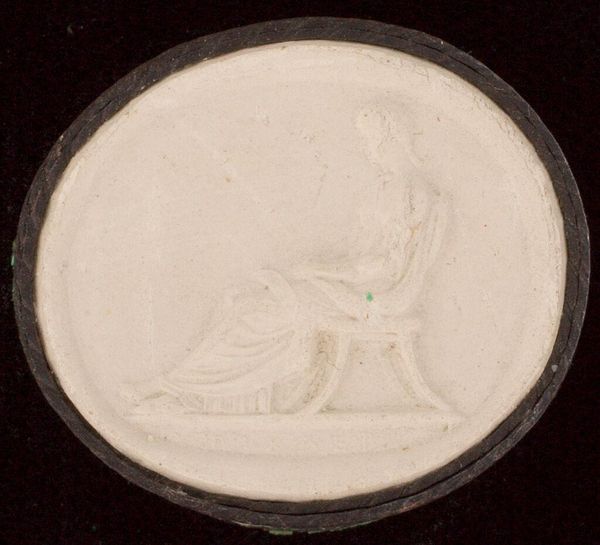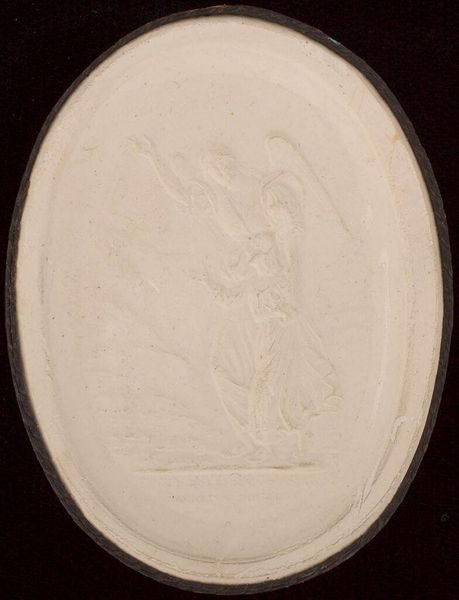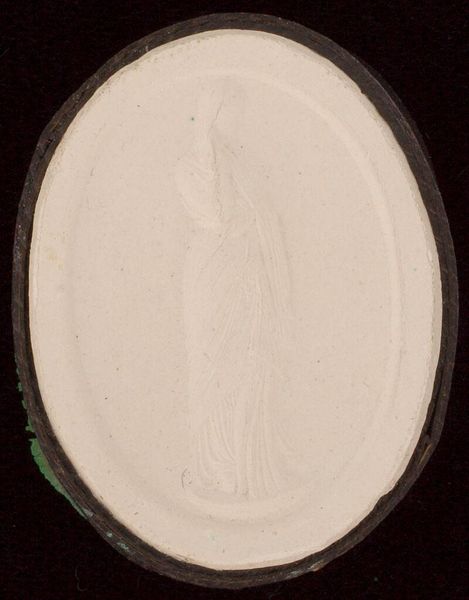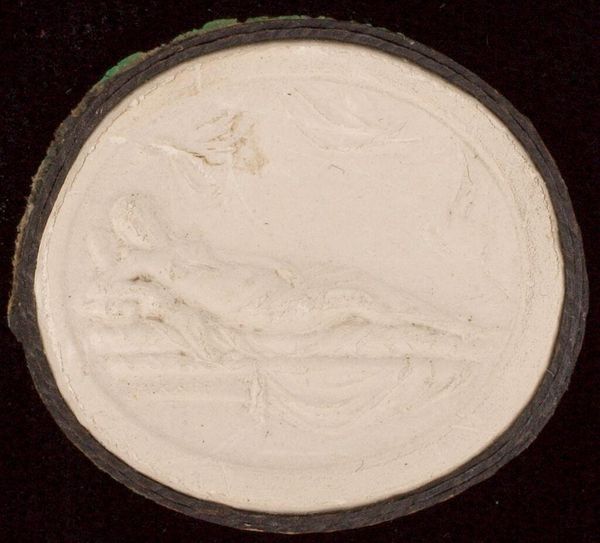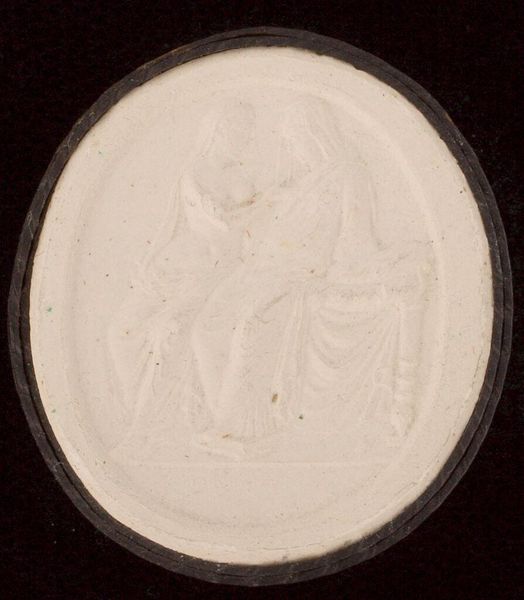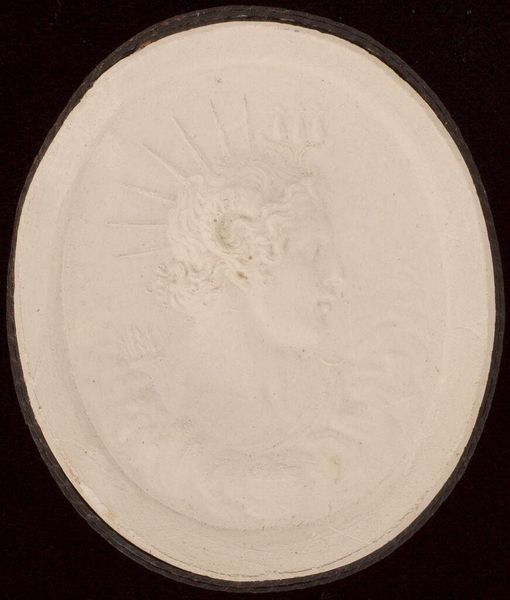
Dimensions: 3.7 x 2.7 x 1 cm (1 7/16 x 1 1/16 x 3/8 in.)
Copyright: CC0 1.0
Curator: Here we have a plaster intaglio of Aristide, after antiquity, created by Settari. It is housed here at the Harvard Art Museums. Editor: What strikes me is the starkness of the white plaster against the dark surround. It almost feels like a ghostly impression, a memory faintly recalled. Curator: Indeed. Intaglios like this were often collected as souvenirs of classical sites, or used as models for larger sculptures, playing an important role in the 18th and 19th century rediscovery of antiquity. Editor: Looking closely, you can really see the artist's hand in the subtle carving of the figure's drapery. The material itself, plaster, speaks to a democratization of art; more accessible and easier to work with than marble. Curator: That's right. The reproducibility of intaglios allowed for a wider dissemination of classical ideals. This artwork reveals how the past was actively reshaped and consumed by later societies. Editor: And seeing it now, it highlights how we continue to engage with that past, reimagining it through new materials and contexts.
Comments
No comments
Be the first to comment and join the conversation on the ultimate creative platform.
